It seems that some folks are determined to make photography more difficult than it has to be. You might hear some photographers say, “I only shoot using the manual exposure mode,” while others might say, “I only use the Aperture or Shutter Priority exposure mode.”
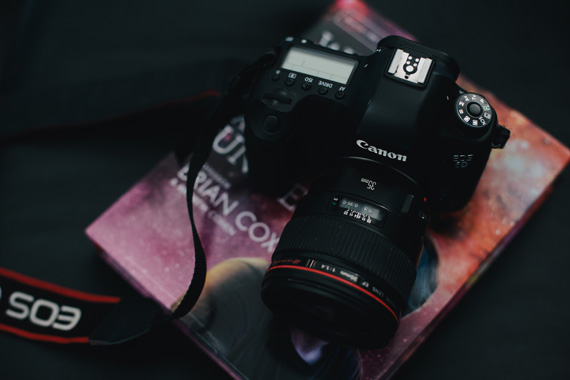
Photo captured by James Bold
That’s fine and well for those who understand the basics of camera exposures. It’s also great to use those shooting modes when a change of the lens aperture opening and/or shutter speed setting will give better results for an image. But, is it really necessary to fumble with exposure controls for every shot? No, not really. That’s why all cameras have automatic shooting modes. Pictures taken using the automatic mode will generally come out pretty good. When you use the automatic mode, the camera will choose just about every setting for you to get a proper exposure; however, there are times when changing certain camera settings will produce a better image. Unfortunately, those settings cannot be changed when you are shooting in the automatic mode.
What is Program Mode?
Let me introduce you to Program mode. Program or “P” mode is similar to your camera’s automatic mode because it will automatically set a proper exposure value for your shot (as far as the lens aperture opening and shutter speed).
What makes using Program mode different than shooting in automatic is that you will have control over most camera settings while the camera chooses the best exposure values. The settings that you will be able to control in Program mode will include the ISO, light metering, focusing, and flash settings.
Every DSLR camera and mirrorless camera has a “P” mode setting. However, most basic compact cameras won’t have a program mode.
So, Program mode is good for learning how to use different camera settings without having to worry about obtaining the proper exposure as well. You can use Program mode for spur of the moment shots without messing up too many pictures due to bad exposure settings. You can always experiment with manual settings when getting the shot exactly “right” is not critical.
Take note that the lens aperture and shutter speed settings can be controlled to an extent in the “P” Program Shift mode. We will discuss that a little more in just a bit.

photo by Heidi
When To Use Program Mode
But first, let’s take a look at a couple of picture taking situations when the Program mode can be useful. Let’s say you’re taking pictures of a scene with very bright as well as dark shaded areas. Sometimes in a situation like that, your camera’s light meter can be fooled and produce an underexposed or overexposed image.
If you’re using Program mode you can set your camera to Spot Metering and read the light from a small area rather than reading the light from the overall scene. That will give you a proper exposure for the part of the scene or subject that you think is the most important (the camera will set the exposure values). You would not be able to use spot metering if you were shooting in automatic mode.
Here is another scenario in which the program mode can be useful. Let’s say your camera is set to a focusing mode that covers a wide area of the scene you are viewing. If you’re trying to take a picture of a flower that is close to other flowers or leaves, the camera might focus on the wrong flower.

photo by Elliot Plack
That’s not a big problem if you’re in Program mode. Just change your camera’s focusing mode so that it zeros in on the exact area that you want to be in focus. Once again, you would not be able to perform this function if you were using the automatic mode.
So, the point is that just about any camera setting that you may use in manual mode can be used in Program mode. Once again, remember that the lens aperture and shutter speed are automatically set for you when you use the P mode.
Fine Tuning Program Mode
As previously mentioned, the aperture and shutter speed can also be adjusted somewhat in P mode. For example, once you compose a picture and press the shutter half way down, you will be able to see the lens aperture and shutter speed the camera has chosen on the LCD screen. If you think the shutter speed might be too slow, there will be a dial on the camera that you can rotate or a button to press to change the shutter speed.
(This will be called using the Program Shift or Flexible mode. It is part of the regular Program mode. Check your camera’s instruction manual for more precise instructions.)
What will happen once you change the shutter speed is that the aperture will be changed accordingly to maintain a correct exposure. If it is the aperture setting you want to change, just move the dial or button in the opposite direction. You’ll be able to choose the aperture setting you want and the camera will set the shutter speed for a proper exposure.

photo by John Ragai
Some will say that the same type of adjustment can be done using the aperture or shutter priority modes. That is very true. But again, one of the main reasons to use the Program mode is so that you don’t have to worry about setting aperture or shutter speed. However, it’s good to have the option of quickly adjusting them in the Program mode if you choose to do so.
While using Program mode can be very useful, it is also a good idea to learn how to use Aperture Priority, Shutter Priority, and Manual modes as well. Eventually you’ll figure out which one might be your first choice.
About the Author:
If you need to learn more about aperture, shutter, and ISO, feel free to visit http://easybasicphotography.com/Camera-Exposure-basics. There are plenty of other photography tips and topics at the site to help you better understand the basics of photography.
Like This Article?
Don't Miss The Next One!
Join over 100,000 photographers of all experience levels who receive our free photography tips and articles to stay current:

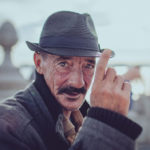
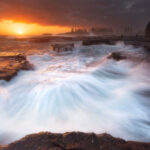
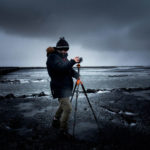

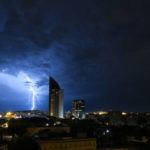
Help!!! I have 2 cameras, both from new. one is a Fuji 6500fd, and the other-Fuji 9400
I am not a photographer-never have been, and never will be, and I am 83 years old.
Problem- Which of these 2 cameras, with same settings should, or could take the best photo.
I seem to spend half of my days using both cameras and trying to decide which one to keep (use)
Can somebody please enlighten me.
Colin
To Donna, with the “open” problem.
Are you using P mode (program) or is it B mode (bulb) with some paint worn off?
You said it was a hand me down.
If it’s B for bulb, the shutter will stay open for as long as the shutter button is held.
Try increasing ISO setting and see if the shutter speed changes.
David W
Only the people that don’t know anything about photography will agree with this article. The problem is that most people want GREAT photos without learning photography and articles like this just add to the confusion. Oh well, good for all of you, keep thinking that you don’t have to learn anything about photography and keep looking for the NEXT Best camera that will make you a photographer.
I wonder if I can become a lawyer using YouTube videos and represent people that way? Maybe I should try it and if it does work, I just keep looking for more videos.
Straight forward explanation of P mode which helped me. I use M,A&S most of the time but never appreciated the benefits of P until I read this article. Also Andree’s description of chasing bugs and wildlife.
I have a hand me down camera…and have no idea what most of it does. Trying to learn. When I put it on P mode, if I depress the button to take a photo, it stays “open” until I press it again. I assume this relates to shutter speed? But can’t seem to change it . Any suggestions?
I sometimes set one camera to auto when I shoot wedding, just to point and shoot quickly.
Thank you Keith for a very brief but extremely uncluttered understanding of the “P” mode. Been using that for some time now, with great result.
I never understand why an author would use someone else’s photographs in an article. It makes me question their skills.
I definitely think that Auto modes have a role in photography, at some point. It makes life easier, definitely, since all you have to do is point and shoot. The results will be great most of the time, when the weather is right. But I don’t really understand the point of the article. I guess if you already use P mode then it makes you feel good that other people do too. But if you don’t, I think it takes as much time to learn M mode than it does to learn the P mode. M mode is definitely easier. If you really want to make it easy for you, just use Auto, not P. If you want to be more creative I think M mode is better. If you bought a DSLR surely it is because you want better control and better photos? A friend of mine upgraded from Point and Shoot to DSLR then said to me: ‘I’ve just learned that having a DSLR doesn’t make you take better photos!’ That’s because she uses the Auto modes. Also, with M mode there is the option to let your camera choose the right ISO automatically – it’s brilliant!! :)
All this discussion, looks to me, is obviously under an assumption that there are only 3 modes on a camera you can use: auto, P, and manual. So P is the best choice out of auto and manual.
But if I know how to use Av and Tv (S) modes, then I have way better control than P, in terms of control of the aperture or shutter speed. Then what’s the point of using P?
Another reason to use P mode: chasing bugs. When you are following a bug (or any wildlife for that matter) a split second can make the difference between a photo or a photo of empty air. You still have to learn a lot about exposure, shutter and aperture, though, because of lighting, weather and even the bugs themselves. In P mode, as you said, I can quickly change a setting that needs fixing and still get an insect photograph.
I paid my dues on film cameras and handheld light meters Since moving to digital cameras with choice of mode I use P close to 100% of the time. I don’t want the camera to ever have the choice of ISO and I want to have access to exposure compensation. Beyond that, I am perfectly willing to let the camera do the heavy lifting on exposure for most subjects. Of course, the dues I mentioned in the first sentence have given me the experience to know when to switch my mode to A or S if the subject or desired effect calls for it.
I completely agree. There is this kid in my Photojournalism class with a Canon dslr and he always shoots in manual mode. But when ever we share our pictures, his are always terrible! I know for a fact that if he would just switch it in auto or p at least, he would take so much better pictures.